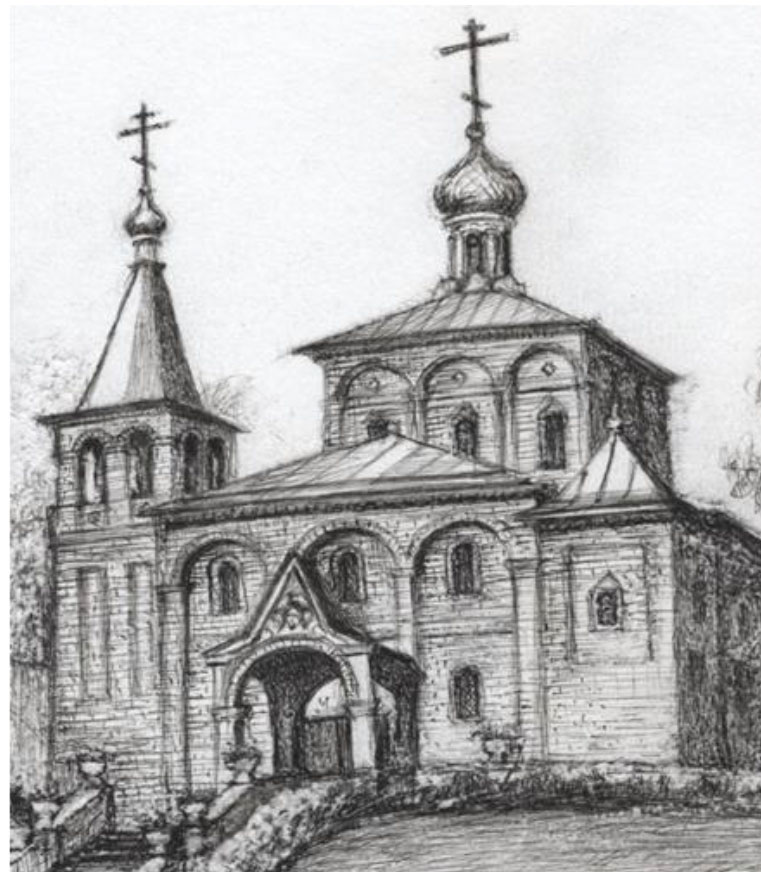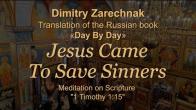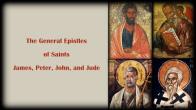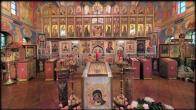You are here
St. Sylvester, abbot of Obnora
25 April / 8 May
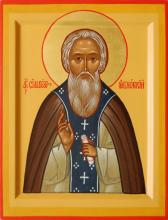 St. Sylvester of Obnora lived in the 14th Century, and was a contemporary of Holy Hierarch Alexis, Metropolitan of Moscow. He was a disciple of St. Sergius of Radonezh. No detailed account of St. Sylvester’s life has survived. It is known that from early youth he harbored a love for prayerful solitude. With the blessing of his rector, Sergius of Radonezh, Abbot of the Holy Trinity Monastery, Monk Sylvester went to seek a desert place in which to practice a life of silence. About 20 km. from the former town of Liubima in the land of Yaroslavl, in a secluded uninhabited desert place on the bank of the Obnora River, under a dense forest canopy, the Venerable One erected a Cross. After building a small cell, the Holy Hermit began to spend his days and nights in unceasing prayer and strict fasting. According to extant tradition, it happened that while going to draw water from the river, the Venerable One had a revelation that the hermitage he had chosen for his spiritual efforts would become famous and would attract a multitude of monastics.
St. Sylvester of Obnora lived in the 14th Century, and was a contemporary of Holy Hierarch Alexis, Metropolitan of Moscow. He was a disciple of St. Sergius of Radonezh. No detailed account of St. Sylvester’s life has survived. It is known that from early youth he harbored a love for prayerful solitude. With the blessing of his rector, Sergius of Radonezh, Abbot of the Holy Trinity Monastery, Monk Sylvester went to seek a desert place in which to practice a life of silence. About 20 km. from the former town of Liubima in the land of Yaroslavl, in a secluded uninhabited desert place on the bank of the Obnora River, under a dense forest canopy, the Venerable One erected a Cross. After building a small cell, the Holy Hermit began to spend his days and nights in unceasing prayer and strict fasting. According to extant tradition, it happened that while going to draw water from the river, the Venerable One had a revelation that the hermitage he had chosen for his spiritual efforts would become famous and would attract a multitude of monastics.
Some time later, St. Sylvester’s life in seclusion was revealed to the residents of nearby settlements, and people seeking spiritual direction began to visit the hermit for advice and blessing. St. Sylvester lovingly welcomed everyone, and to those who wanted to struggle along with him, he gave his blessing to build individual cells. When the numbers of desert-dwellers noticeably increased, St. Sylvester decided to establish a church and monastery there. He received both a blessing for that endeavor and an antimension from Holy Hierarch Alexis, Metropolitan of Moscow (+1378). St. Sylvester became the first abbot of that monastery on the banks of the Obnora River; later the monastery became renowned for the spiritual struggles of Venerable Sts. Paul of Obnora and Sergius of Murom. The wooden church was consecrated as a Church of the Resurrection of Christ, and thus, the monastery itself became known as the Monastery of the Resurrection. As abbot, Venerable St. Sylvester showed the brethren a constant example of monastic struggle and tireless labor. A love of silence remained dear to the spiritual struggler’s heart. From time to time, he would leave the monastery and go deep into the forest to pray in solitude. St. Sylvester dug four wells there with his own hands; in the 19th Century, one of them was still known as an object of veneration.
The desire to receive instruction from the wise elder caused people to follow him into his place of solitude. Turning away no one, St. Sylvester would come out of his refuge, and would bless the faithful and have long conversations with them. During his lifetime, the place where the Venerable One would go to find solitude became known as the “sanctuary” grove, and was treated with great reverence by the local populace; each generation passed on to the next the Holy Elder’s direction that no trees be cut down within it. The Venerable One dug three wells deep within that forest grove, and a fourth near the Obnora River.
In 1645, Hieromonk Job, builder of the Resurrection Monastery, disobeyed the Miracle-worker’s order, and decided to cut down some of the trees in the grove. In punishment for that decision, he was struck blind; he later regained his sight at St. Sylvester’s coffin. Since then, no one has dared to cut down trees in the sanctuary grove. Nonetheless, few ancient trees remain there; time destroys them.
When the Saint was struck with the illness that was to result in his death, the brethren were pained to see him go off to be alone, and were even more sorrowful over the fact that his demise was imminent. To comfort them, the Venerable one would say, “Do not mourn over this; everything is according to the will of God. Keep the Lord’s Commandments, and do not be afraid of having to endure sorrows in this life in order to receive a reward in the Heavens. Should I have the daring before God, and if my action is pleasing to Him, this holy place will not whither away even after my departure. Only pray to the Lord God and to His Most-pure Mother that you be delivered from the temptations of the evil one.” The Venerable One reposed on April 25 and was buried to the right of the wooden Church of the Resurrection.
It is through a famous 17th Century Icon that a portion of St. Sylvester’s spiritual testament has come down to us. The Icon depicts St. Sylvester holding a scroll on which is written a portion of that testament.
Soon after the Saint’s repose, a chapel was erected on the site where he held his religious talks. Every year, Processions of the Cross around the chapel would be made in honor of the holy spiritual struggler. The Saint’s burial place was especially venerated, as his coffin came to be a source of miraculous healings. As was the case in other Northern monasteries, the Resurrection Monastery was subjected to devastation more than once: in 1538, during a Tatar invasion, and in 1612, by Polish occupying forces. By 1647 the Monastery had been restored. In 1656, with the blessing of Patriarch Nikon, a church dedicated to the Protection of the Most-holy Theotokos was built to replace the wooden chapel over St. Sylvester’s burial place. In 1764, the Monastery was closed down, and its Cathedral became a parish church.
In 1821 Archbishop Philaret of Yaroslavl, later Metropolitan of Moscow, issued a certificate of blessing to replace the wooden Holy Protection Church with a Resurrection Church, to be constructed of stone. It was completed in 1825. St. Sylvester’s incorrupt relics were installed in a bronze, silver-plated crypt in one of the side-chapels in the Resurrection Church.
PARISH LIFE
Address of our Cathedral
Subscribe to our mailing list
While all the materials on this site are copyrighted, you may use them freely as long as you treat them
with respect and provide attribution on the Russian Orthodox Cathedral of St.John the Baptist of Washington DC.


